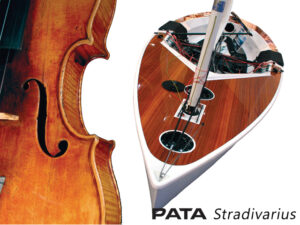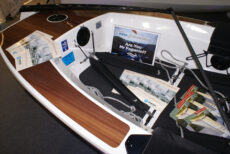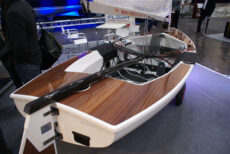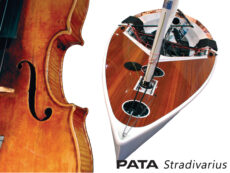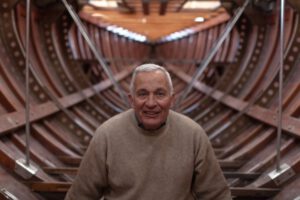All lessons concluded - we created the PATA Fanatic 2020
She follows the successful international trends in a sophisticated way while some unique innovations are added.
When we created Pata Fanatic, we tried to follow, but not slavishly copy the trend observed on often winning boats at international competitions. In the Pata Fanatic development work we took the best practices and we went further.
All our improvements are to increase the righting moment. Both design and structural innovations serve this purpose.
SHAPE CHANGES
Maximum boat width
Our goal was to provide maximum volume of the cross sections to work against tilting. The volumes working on the lee side should be large. We also paid special attention to sections that had not previously been in the focus. These are sections 8, 6 and 4 (which are near the hiking position). By making the most of the rules, the new ship is as full as possible.
Shape changes in the hiking position
At the deck level of the cross sections 2 and 4, where the shape of the boat is unchecked, these sectiona are widened to the limits of the rule. The Pata Fanatic is 3 cm wider than her predecessor Pata FX1. That increases 1-1.5% the hiking torque by each centimeter.
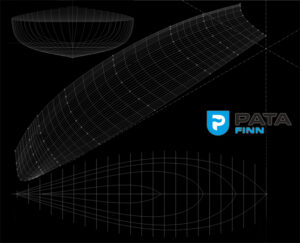
The waterline of the tilted boat must be as symmetrical as possible
The importance of this characteristic of the Finn has diminished somewhat, as the purpose of today’s boat drivig style is to keep the boat standing straigh in downwind as well. If the Finn sailor does this well, he will not let the boat tilting and will keep his Finn straight in downwind as well. However, in addition to some rollover, in light wind some tilt is useful to keep the sail in good shape due to its weight.
Reducing the vertical motion on the waves
At the keel line the intersection shape shall better not be like a deep V but a „flat roof” like form. Especially at section 8. This has proven to be successful by the best boats and winner types, so we adopted it.
Hull shape changes for the better downwind speed
Between the hiking area and the transom, the keel line is straight and the aft 2 is a flatter, tucked-up shape.
STRUCTURAL DEVELOPMENTS
New deck construction
The deck is made of two pieces. Traditionally, the shorter section extends from the bow to the hiking area, and the second part of the deck till the transom is built as a separate piece. At Pata Fanatic, this first section has been enlarged and extends beyond the hiking area. So the sailor hiking in the beat sits on the same composite element as the mast. The relationship is more lively in the mast – centerboard – helmsman triangle. The energy distribution is more harmonious. The dynamic power of the Finn, the projecting force, has a direct and harmonic relationship with the mast.
Hull structure modifications
Obviously, the characteristics of the shell follow the trend that has been gradually evolving over the years to make the nose very soft and the shape of the stern working at the back to be as dented as necessary. This is served by the new layering plan and the modification of the rib order.
order of ribs

